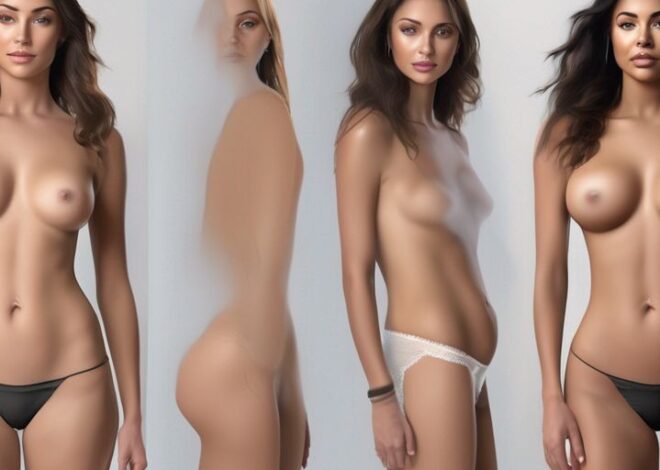
Navigating the Controversy of Using AI to Create Nude Images
The utilization of Artificial Intelligence (AI) to generate nude images of individuals has sparked a significant controversy, raising numerous ethical, legal, and societal concerns. As AI technologies like Nudify.Online, which uses advanced AI to digitally remove clothes from images, become more sophisticated, the implications of their use become increasingly complex. This article explores the multifaceted issues surrounding AI-generated nudity, from ethical dilemmas and technological aspects to societal impacts and regulatory responses.
Key Takeaways
- Exploring the ethical challenges posed by AI-generated nude images, focusing on consent, privacy, and the potential for misuse.
- Understanding the technological mechanisms behind AI applications like Nudify.Online that create nude images and their accuracy limitations.
- Evaluating the societal repercussions, including the influence on body image and the normalization of digital exposure.
- Discussing the regulatory landscape, including existing laws and potential legislative changes to address AI-generated nudity.
- Highlighting the role of AI ethics and the responsibilities of developers, corporations, and users in managing and mitigating risks associated with AI-generated nude images.
The Ethical Dilemma of AI-Generated Nude Images

Consent and Privacy Concerns
The use of platforms like Nudify.Online raises significant consent and privacy concerns. Individuals may find their images used without their explicit permission, leading to potential privacy violations.
Impact on Social Norms
AI-generated nude images can profoundly affect social norms regarding nudity and privacy. The ease of creating such images blurs the lines between public and private life, potentially normalizing what was once considered private.
Legal Implications
The legal landscape is still catching up with the rapid advancements in AI technology. There are numerous questions about the legality of creating and distributing AI-generated nude images, and the lack of clear regulations complicates the enforcement of existing laws.
Technological Aspects of AI in Creating Nude Images

How AI Understands and Processes Images
AI systems, such as those used by Nudify.Online, employ complex algorithms to analyze and interpret visual data. These systems are trained on vast datasets to recognize patterns and features that correspond to human anatomy. The AI reconstructs what it predicts a person’s naked body would look like based on data about their gender, face, age, and body shape.
Advancements in AI Technology
The field of AI has seen significant advancements that enable more accurate and realistic image generation. Recent developments include improved machine learning models and enhanced computational power, which allow for quicker and more precise image processing.
Accuracy and Limitations
While AI technology has advanced, it is not without its limitations. The accuracy of generated images can vary greatly depending on the quality and characteristics of the input image. Factors such as lighting, angle, and clothing can affect the outcome. Moreover, ethical concerns about consent and misuse continue to pose challenges to the widespread adoption of this technology.
Societal Impact of Platforms like Nudify.Online

Influence on Body Image
Platforms like Nudify.Online have significantly altered perceptions of body image among users. By providing tools to digitally alter physical appearances, these platforms may contribute to unrealistic body standards and self-image issues. The constant exposure to idealized images can lead to dissatisfaction and body dysmorphia among users.
Normalization of Digital Exposure
The ease of creating and sharing nude images through platforms such as Nudify.Online has led to a normalization of digital nudity. This shift can desensitize individuals to privacy concerns and alter their understanding of personal boundaries in digital spaces. The trend is particularly concerning as it might encourage the disregard for consent in sharing personal images.
Public Reaction and Backlash
The public reaction to platforms like Nudify.Online has been mixed, with significant backlash from various societal groups. Concerns about ethical implications and the potential for misuse have sparked debates and calls for stricter regulations. The backlash is often fueled by instances where such technologies are used without the subjects’ consent, leading to serious personal and legal consequences.
Regulatory Responses to AI-Generated Nudity

Existing Laws and Regulations
Current regulations struggle to keep pace with the rapid advancement of AI technologies. Most jurisdictions lack specific laws addressing AI-generated nudity, often relying on broader privacy and obscenity laws. Key challenges include defining the legal status of AI-generated images and determining the applicability of consent in digital creations.
Proposed Changes in Legislation
Lawmakers are wrestling with how to regulate deepfakes and similar technologies. Proposed legislative changes aim to specifically address the creation and distribution of AI-generated nude images, focusing on consent and the protection of digital identity. These changes are crucial to prevent misuse and protect individuals from non-consensual digital exposure.
International Legal Perspectives
Different countries exhibit varied responses to AI-generated nudity, reflecting diverse cultural and legal frameworks. Some nations have enacted strict bans, while others are still evaluating the implications. This global disparity poses challenges for international cooperation and enforcement in combating the misuse of AI technologies in generating nude images.
The Role of AI Ethics in Nude Image Generation

Ethical Guidelines for Developers
Developers of AI technologies that generate nude images must adhere to strict ethical guidelines to prevent misuse. Key considerations include ensuring accuracy and respecting user consent. Establishing clear protocols for the use of such technologies can mitigate potential harms.
Corporate Responsibility
Companies involved in the development or distribution of AI-generated nude imagery bear a significant responsibility. They must implement robust oversight mechanisms to ensure their products are used ethically and legally. This includes transparency about the AI’s capabilities and limitations.
User Accountability
Users of platforms like Nudify.Online also have a role to play in ethical AI usage. They must be aware of the implications of generating and sharing AI-created nude images, including the potential for harm and legal consequences. Educating users on the ethical use of such technologies is crucial for fostering a responsible digital environment.
Future Directions in AI and Digital Consent

Technological Safeguards
In the rapidly evolving landscape of AI, technological safeguards are crucial to ensure ethical use and digital consent. Future AI systems could incorporate advanced features like real-time consent verification and automatic blurring of sensitive content without explicit approval. These safeguards will be essential in maintaining user trust and compliance with evolving regulations.
Educating Users and the Public
A concerted effort to educate users and the public about the capabilities and risks associated with AI-generated content is vital. Workshops, online courses, and public awareness campaigns can play a significant role in fostering a well-informed user base, which is crucial for ethical engagement with AI technologies.
Predictions for Future Legal and Ethical Norms
The legal and ethical landscape surrounding AI and digital consent is expected to undergo significant changes. Proposed changes in legislation, such as the requirement for platforms to get consumer consent before using personal data, will shape the future of AI interactions. This evolving framework will likely influence global standards and practices, ensuring a balanced approach to innovation and privacy.
Conclusion
In conclusion, the use of AI to create nude images, as exemplified by platforms like Nudify.Online, presents a complex blend of technological innovation and ethical dilemmas. While the technology showcases advanced capabilities in image processing, it also raises significant concerns regarding privacy, consent, and the potential for misuse. As society navigates these challenges, it is crucial to foster a dialogue that balances innovation with respect for individual rights, ensuring that advancements in AI are used responsibly and ethically.
Frequently Asked Questions
What is Nudify.Online?
Nudify.Online is an advanced web-application that uses cutting-edge AI technology to digitally remove clothes from images of people, simulating nudity.
Is it legal to use AI to create nude images?
The legality of using AI to create nude images varies by jurisdiction. It often hinges on issues of consent, privacy, and existing laws regarding digital content and pornography.
How does AI understand and process images to create nude versions?
AI processes images using complex algorithms that analyze and reconstruct the image data, removing clothes and simulating the appearance of nudity based on learned patterns and data sets.
What are the ethical concerns associated with AI-generated nude images?
Ethical concerns include consent, privacy invasion, potential misuse for harassment or defamation, and the impact on social norms and body image perceptions.
Can AI-generated nude images impact societal norms and body image?
Yes, the widespread use of platforms like Nudify.Online can influence societal norms around nudity, privacy, and body image, potentially leading to both normalization and discomfort among different community segments.
What measures can be taken to regulate AI-generated nudity?
Regulatory measures could include stricter laws on digital consent, privacy protections, user verification processes, and clear guidelines for AI developers and platforms regarding ethical usage.



